

CHRISTIAN LEADER



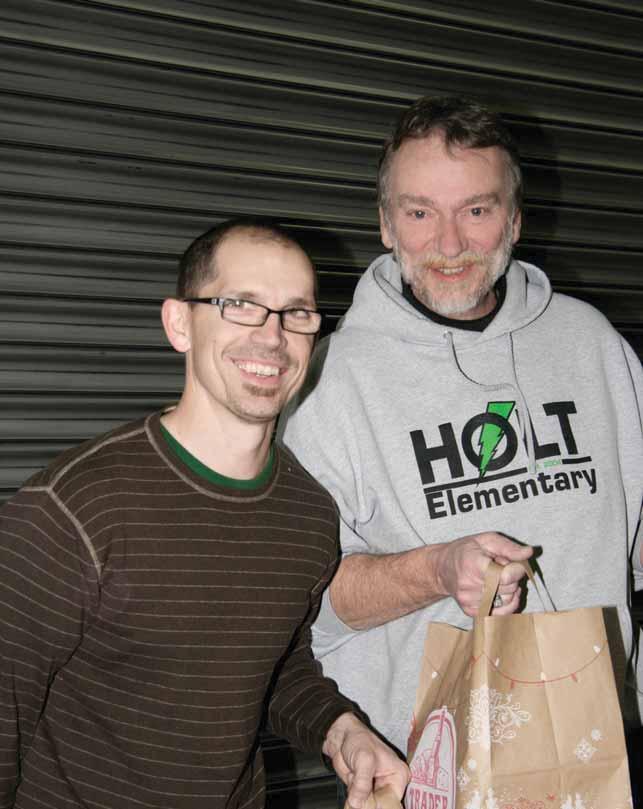
Thinking about Lent MDS veteran Six new churches





FEBRUARY / MARCH 2013



US. Mennonite Brethren gathered in late January for what Board of Faith and Life (BFL) chair Larry Nikkel told delegates to the USMB biennial convention “may be the most important gathering of (USMB) leaders we’ve had in 50 years.” Important because participants would talk about two articles (Article 12 Society and State and Article 13 Love and Nonresistance) in our Confession of Faith about which we lack consensus and therefore unity. “We’ve probably never had the sense of unity on this issue (Peace and Nonresistance) that some may think that we’ve had,” said Nikkel in a CL interview (“Time for a family talk,” Oct/Nov issue). Important because this occasion would test our mettle: Can we talk peaceably about peace?
It’s OK to have strong feelings about important matters as long as we listen well to one another.

Connie Faber Editor
In numerous conversations with the CL, Nikkel emphasized that the 2013 study conference would be the beginning of a 12 to 18 month conversation. And so the CL editors agreed to not publish articles or essays on this topic prior to the January event. Nikkel also repeatedly said that this event would be open to anyone and everyone. And so it is important that we provide an avenue for those interested in discussing this important issue, whether or not they were able to attend the study conference. The CL offers limited opportunities for dialogue—we publish on a bimonthly schedule, and our content is limited to 32 pages—but these restrictions are not an issue in an online discussion or blog site. And so the CL, BFL and the USMB social media coordinator are partnering to create a discussion space on the USMB website.
This online discussion provides an opportunity for those in the USMB family to continue the conversation that began at the “Kingdom Citizens in a World of Conflict” study conference. This discussion, like the study conference, centers on a biblical understanding and real world application of Articles 12 and 13. The goal of the discussion is to provide input for BFL on the mood, biases and positions of the USMB family as the board reviews the articles, identifies areas of unity and determines the best path forward in processing the USMB commitment to peacemaking.
We expect participants to have a variety of opinions and to disagree with one another. It’s OK to have strong feelings about important matters as long as we listen well to one another. USMB social media coordinator Myra Holmes, who is also the CL assistant editor, will moderate the blog to ensure that the discussion stays on track and avoids personal attacks. Excerpts and full reprints of study conference papers will be posted on the site. Readers are invited to submit essays, respond to discussion questions and leave comments and interact electronically with one another. Join the conversation by visiting www.usmb.org/2013-study-conference.













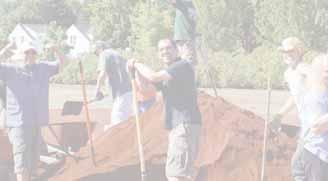


Kyle Goings

Crave (verb): to long for, want greatly, desire. Have you ever craved something so strongly you didn’t know what would happen if you didn’t get it? I am not talking about craving food but maybe a promotion, your dream house, to get married or even a child. What did it feel like when that craving was met? Were you satisfied for a while, maybe even years, but then excitement faded and you soon moved on to another craving?
I believe we were made to crave. God created us to crave and his desire is that we will crave a relationship with him. The best way to build that relationship is to meditate on his Word. Take an honest look at your life. Can you say you crave the Word of God? If a day goes by and you don’t have your intimate quiet time with God, do you feel like something is missing?
1 Peter 2:2 says, “Like newborn babies, you must crave pure spiritual milk so that you will grow into a full experience of salvation. Cry out for this nourishment” (NLT). If you have ever spent more than one minute around a newborn you know that a baby cries as if the world is coming to an end if she doesn’t get satisfied. There is no hiding it, and the baby doesn’t care who knows it.
This should be our response to the Word of God. We should be crying out for more nourishment for our lives because we are starving without it. David knew this when he wrote Psalms 86:11 (NLT), “Teach me your ways, O Lord, that I may live according to your truth!” David knew that the more he understood Scripture the more his life reflected Scripture. And the more his life reflected Scripture the more glory and honor would be given back to God.
But it starts with a craving, a desire to know what God has in store for you, and that desire can be met by reading God’s Word. It’s more than attending a church on Sunday morning, more than participating in a Bible study or small group; it is getting into the Bible every day. To know God’s Word is to know God.
And when you realize the Bible isn’t just for informational purposes but is a tool to transform lives you will soon realize, as David did, that the Bible is the only thing in this universe that a person can crave, and it will never disappoint, never go unfulfilled and will always satisfy.
Kyle Goings is youth pastor at Bible Fellowship Church, a USMB congregation in Rapid City, SD.

“Teach me your ways, O Lord, that I may live according to your truth! Grant me purity of heart, so that I may honor you” (Ps. 86:11 NLT).
CHRISTIAN LEADER
February / March 2013
Volume 76 • Number 1
Connie Faber EDITOR
Myra Holmes ASSISTANT EDITOR
Shelley Plett GRAPHIC DESIGNER
North Park Community Church
COVER PHOTO ofPastor Aaron Box and Holt Elementary principal Kevin Boling
The Christian Leader (ISSN 0009-5149) is a gathering place for the people, passions and mission of U.S Mennonite Brethren. The Christian Leader is published bimonthly by the U.S. Conference of Mennonite Brethren Churches. However, the opinions expressed here are not necessarily those of the church as a whole.
COPYRIGHT The articles printed in the Christian Leader are owned by the CL or by the author and may not be reprinted without permission. Unless noted, Scripture quotations are from the New International Version.
READER PARTICIPATION Letters to the editor should be 300 words or less and on one subject. Letters must be signed and include the writer’s city and state. Letters will be edited for clarity, appropriateness and length. Letters will be published, as space allows, unless marked, “Not for publication.” Readers interested in contributing essays for In My Humble Opinion and First Person should contact the editor. Freelance article submissions are welcome; a SASE must accompany articles.
SUBSCRIPTIONS $10 for six issues and $20 for 12 issues ($15, $30 in Canada; all other countries $25 for six issues); $1.50 per copy
CORRESPONDENCE: All correspondence, including subscription questions and address updates, should be addressed to Christian Leader Box 155, 107 N. Main, Hillsboro, KS 67063-0155 Phone: 620.947.5543
E-mail: christianleader@usmb.org
MEMBERSHIP The Christian Leader is a member of the Evangelical Press Association and Meetinghouse, an association of Mennonite and Brethren in Christ editors.
POSTMASTER Send address changes to Christian Leader, Box 155, Hillsboro, KS 67063. Periodicals postage paid at Hillsboro, Kansas.
The Christian Leader is published by

U.S. Conference of MB Churches

Ed Boschman USMB executive director
ebed@usmb.org
What’s up with church membership?
During the 1980s, while it was my privilege to be the lead pastor at Laurelglen Bible Church in Bakersfield, Calif., we usually held new member sessions three times a year. We met for a series of five one-hour sessions. After an inaugural high-speed hour about the history of the Christian church, including a significant and prioritized focus on the birth of the Anabaptists and the Mennonites and then the Mennonite Brethren, we taught our core biblical beliefs. The sessions concluded with clarification about what it would mean to be a member of LBC— both what the church would expect of its members and what the members could expect of the church.
While the process was somewhat intense, it was also productive. We had people come to faith in Jesus. When we arrived at the end of that course of studies, we normally had most everyone saying, “If that is what it means to be Mennonite Brethren and a member at LBC, count me in.” In many cases that also meant filling the baptistery, which in itself was a deeply meaningful, celebratory and powerful witness.
Perhaps it is because I still have powerful and positive feelings about those times that a recent Christianity Today report caught my attention. The November 2012 issue reports the results of a Grey Matter Research project in which regular churchgoers were asked about membership in their church. Thirty-seven percent indicated, “I am a member of my church.” Ten percent said, “I attend but am not a member.” Fifty-two percent reported, “I don’t know if my church offers membership.” And 1 percent answered that they were “unsure.” This last statistic in itself is a little bizarre, but let’s not go there.
We know that some of the discussion that amplifies this subject is the matter of membership in the universal church. While there are both truth and merit to the universal reality, I’m willing to challenge anyone to point out where the Bible pulls those apart. It seems to me self-evident that the New Testament knows nothing about Christians who are not attached to a local church. For what it’s worth, the Scriptures also know nothing of believers who love Jesus but not the church.
In that early church reality, leaving the “Caesar is Lord” reality and choosing Jesus as Lord hooked one in to the church in a covenant relationship like none other. Speaking of which, our abbreviated MB Confession of Faith says, “We believe the church is the covenant community called by God through Jesus Christ to live a life of discipleship and witness as empowered by the Holy Spirit. The local church gathers regularly for worship, fellowship and accountability, and to discern, develop and exercise gifts for ministry.”
What is it about declaring commitment to that kind of community that makes it unimportant? What is it about our church life that makes membership unattractive? How and why did baptism get so separated from committing to the community of faith? How did membership in the invisible global church get separated from the local expression of the body of Christ?
I’m pretty sure you can figure out some of what I am thinking. Am I off the rails? Where am I going wrong here? Share your responses with me at ebed@usmb.org or post them online (www.usmb.org/conference-call).
It seems to me self-evident that the New Testament knows nothing about Christians who are not attached to a local church. For what it’s worth, the Scriptures also know nothing of believers who love Jesus but not the church.
Deciding who we are
We recently received a letter from the USMB staff explaining their vision of planting 60 new Mennonite Brethren churches and asking for our financial support. While we share in the excitement of planting new churches, we are bothered by the fact that none of the new churches mentioned in the letter were publicly identified as Mennonite Brethren. This makes us wonder what these newly-planted churches share with the MB Conference, other than receiving financial aid. At what point, if ever, are the attendees and potential members of these new churches informed that it is a Mennonite Brethren church and what that means?
We recognize that even some of our established churches are deciding to drop Mennonite Brethren from their names. In discussions concerning the reason for this, we have been told “People are not familiar with the Mennonite Brethren,” or “People see the word Mennonite and associate it with stereotypes of Mennonites or Amish,” or even “People are familiar with the Mennonites and their peace position and are hesitant to be a part of a denomination that doesn’t support the military.” And then of course there are those who say the word Brethren is outdated and not appropriate in today’s world.
But is it really a hindrance to be identified as Mennonite Brethren? Our conference has, over the last 150 years, had a rich history of proclaiming the gospel, reaching out to the needy in the name of Christ, living the message of peace and reconciliation and providing Christian education. But the current practice in many of our churches is to mask or downplay who we really are, believing that we will attract more people that way. Perhaps we need to decide just who we are and what we stand for and then unapologetically use our rich heritage and traditions to continue bringing Christ’s message to a world in need of salt and light.
Karen and Gordon Wiebe Hillsboro, Kan.
Devotion to duty, service
Nate Hower’s words in our last Christian Leader demonstrate his lack of understanding for my biblical view of power found in Christian nonviolence (Chat Room, Dec. 2012/Jan. 2013). His misunderstanding is a clear example of how the Mennonite Brethren have neglected Jesus’ teaching on these controversial topics.
The power of nonviolence is the gospel of love and sacrifice on the cross for the lost. “For the message of the cross…is the power of God” (1 Cor. 1:18).
As for Hower’s comments about Memorial Day, Christians should celebrate people who have given their lives to fulfill the Great Commission. While Jesus did not shy away from confronting the political powers of his day, his followers did not try to reform Israel or find answers for the church in politics. Our Lord Jesus is the head of the church, not a republic or the nation of Israel. When Christians today put their personal interests or the needs of their country first, they are in conflict with building the worldwide partnerships needed for the global church.
I have high regard for the military ethics of discipline and self-sacrifice. I wish the church could foster the same devotion to duty and service. However, when we put on the whole armor of God, we are not to “wage war as the world does” (2 Cor. 10:3-4). “For our struggle is not against flesh and blood” (Eph. 6:12). As Christians we are to “endure hardship…like a good soldier of Christ Jesus. No one serving as a soldier gets involved in civilian affairs—he wants to please his commanding officer” (2 Tim. 2:3-4). Ironically, Christians serving in the American military are involved in civilian affairs rather than serving their commanding officer, King Jesus. We need Christians who love the church more than they love America.
Clint Bergen Orland, Calif.
The Christian Leader welcomes letters to the editor. Letters should be 300 words or less and on one subject. Letters must be signed and include writer’s city and state. Letters will be edited for clarity, appropriateness and length. Letters will be published, as space allows, unless marked “not for publication.” Readers wishing to respond to articles published electronically can post comments on our Web site (www.usmb.org/christian-leader) and can also leave comments on the CL Facebook page. Comments posted on the website and Facebook will not be published in the CL Magazine. Readers who would like their online comments to be printed should forward those remarks to the editor at editor@usmb.org
District youth meet to connect, serve, grow
High school youth from three of the five USMB districts gathered in November.
The annual Central District Youth Conference (CDYC) was held Nov. 15-18 at Camp Rivercrest near Fremont, Neb. About 140 high school students heard speaker Mike Donahue from R5 Productions address the theme, “Masterpiece,” taken from Ephesians 2:10. For the third time, the CDYC experience included service opportunities.
Some 550 high school youth and sponsors from the Southern District Conference gathered Nov. 16-18 in Buhler, Kan., for their annual Southern District Youth Conference (SDYC). Chad Stoner, church planting pastor at Stony Brook Church, Omaha, Neb., pictured right, spoke on the theme, “Relentless,” based on 1 Peter 2:9. SDYC participants also attended one of seven workshops and chose from among various free time options and latenight activities.
The Pacific District Conference held a regional event Nov. 10 to build district connections. Some 65 students, 20 youth sponsors and youth pastors from seven USMB congregations in California’s Central Valley gathered at College Community Church MB, Clovis, Calif. Organizers hope to make it an annual event and include youth from more congregations.—Myra Holmes
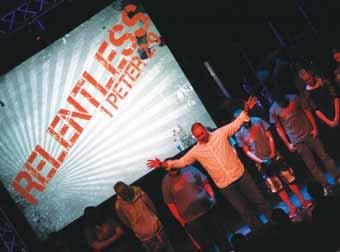
CDC RECOGNIZES ENGBRECHT, CELEBRATES CHURCH PLANTING
When Central District Conference (CDC) delegates gathered Nov. 8-10 at Bethesda Church in Huron, SD, they heard about a change in the district minister assignment and affirmed the district’s commitment to church planting.
In the first business session, CDC chair Chuck Todd announced Roger Engbrecht’s retirement from full-time ministry as district minister at the end of December. Engbrecht will continue working part time as the CDC director of ethnic ministries, a new position that will serve the district’s eight ethnic congregations. Rick Eshbaugh, pastor of Harvey (ND) MB Church, pictured left with Engbrecht, began serving part time in January as the new district minister.
CDC delegates approved a budget that reflects the district’s historical focus on church planting. Of the $229,880 budget approved for 2012-13, $122,000 is earmarked for church planting and renewal and includes planting a new church.
In other business, delegates affirmed nominees to fill vacancies on CDC committees, heard reports from each committee and from representatives of various partner ministries.—Connie Faber
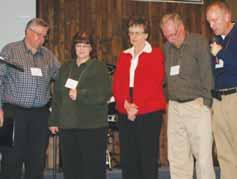
BFL invites pastors
All pastoral staff new to the pastorate or to the USMB are invited to the National Pastors Orientation, which will be held March 11-13 in San Diego, Calif., and is sponsored by the national Board of Faith and Life. The NPO provides an opportunity for pastors to be refreshed, to learn about USMB history, theology and resources and to connect with national and district leaders and other pastors. Spouses are encouraged to attend. Registration deadline is Feb. 18. For more information, visit www.usmb.org.—USMB
SOUTHERN DISTRICT YOUTH COMMISSION
CHRISTIAN LEADER
USMB, MBF encourage “Will Power”
USMB and MB Foundation are planning a series of “Will Power” events to communicate what God is currently doing through the USMB family and to encourage planned gifts to fuel additional ministry in the years ahead.
Statistics say that seven out of 10 people don’t have a will, and over 90 percent of Christians leave nothing to ministry when they pass away. USMB and MB Foundation, the USMB stewardship partner, hope to encourage a different trend.
The nine events being planned for February through April 2013 will be held in Corn, Okla.; Enid, Okla.; Wichita, Kan.; Hillsboro, Kan.; Huron, SD; Bakersfield, Calif.; Reedley, Calif.; Fresno, Calif.; and Lodi, Calif. Ed Boschman, USMB executive director, says, “We look forward to the events and this unique opportunity to connect with our constituency. We are praying they will have significant eternal impact.”
For more information, call MB Foundation at 800-551-1547.—MBF, USMB
byTheNumbers
80% of unmarried evangelicals between the ages of 18 and 29 have had sex.

30% report getting pregnant or getting their partner pregnant. These rates are similar to those of unmarried young adults nationwide.
32% of all unplanned pregnancies had by evangelicals end in abortion.
Source: National Association of Evangelicals Insight newsletter, spring 2012

5 minutes with...
BROTHER SAM TATE
“Playing the gospel is what I do… and I like my job,” Brother Sam Tate declares every week on Gospel Gems, America’s very first nationally/internationally syndicated oldie-goldie black gospel radio program. For 20 years Brother Sam of Boone (NC) MB Church has produced the hour-long broadcast played on 75 radio stations in the U.S. and abroad.


How did you get started in radio?
I worked my way through college at the local black station, WEAL in Greensboro. It was the 60s and I became “Sam the Sham” with my rock and roll show. I’ve done a lot of other things, but always came back to radio.
Why did you create Gospel Gems?
When I started out as a disc jockey I dreamed of going to New York with “Sam the Sham,” but God wanted me to syndicate the gospel instead. And now I’m in New York and all over the world.
Why oldies?
The Holy Spirit said to do the gospel. There are a lot of gospel shows, but we found a void that was not being filled playing the music where Aretha Franklin and Elvis Presley got their start. We are keeping the heritage alive.
Who are you reaching?
Older people appreciate hearing the music that bridged them over to Jesus, but there are a lot of unsaved people who love gospel music, too. We always include a “Sign of the Times” segment to let people know that Jesus is coming soon. And at the close of every program I tell the audience how they can receive Jesus Christ.

What message would you have for people in the church?
Too many people are waiting around for the minister to lead people to Jesus. Have you led anybody to Jesus yet?
To hear samples of Brother Sam Tate’s program go to gospelgemsnetwork.com.
Interview by Kathy Heinrichs Wiest

USMB leaders are planning two “Plant 2013” events this spring to raise funds for church planting in 2013. Each will feature a dinner and silent and live auctions. Funds raised will help Mission USA, the church planting arm of the USMB, partner with the districts in planting new churches. A West Coast event will be held Feb. 23 at Dinuba (Calif.) MB Church. A Midwest event is planned for April 20 at First MB Church, Wichita, Kan. For more information, see www.usmb.org.—USMB

More than 400 students graduated during the Dec. 15 commencement ceremonies at Fresno Pacific University, the Mennonite Brethren-owned school on the West Coast. Of the 417 graduates, 267 were from degree completion programs, 96 were graduate students, including Fresno Pacific Biblical Seminary, and 54 came from traditional undergraduate programs.—FPU
Janzen authors memoir
Award-winning Mennonite Brethren poet Jean Janzen has authored her memoir. In Entering the Wild: Essays on Faith and Writing, Janzen reflects on her life, her family and roots, her writing, and her faith. The memoir is published by and available from Good Books: www.goodbooks.com. —GB

Building to be dedicated


Plant2013events scheduled Nikkel publishes memoir
Leading and Following






Larry Nikkel, teacher, healthcare executive, Tabor College president emeritus and churchman, has written Leading and Following: The Path of Service, an autobiography published by Print Source Direct of Hillsboro, Kan. While not primarily a family history, a book on leadership or management, Nikkel’s book contains elements of each, sprinkled with personal reflections and lightheartedness. CL








MWC appoints Roth
Lynn Roth of Harrisonburg, Va., began serving as the North American representative for Mennonite World Conference in January. Roth holds an undergraduate degree from Fresno Pacific University in political science and a masters from Fresno State University. Roth succeeds Bert Lobe, who served as MWC North American representative since 2008.—MWC
The Mennonite Brethren Church of India will be hosting the dedication observances Feb. 23 for the new Hiebert Memorial Academic Center on the campus of Mennonite Brethren Centenary Bible College in Shamshabad, Andhra Pradesh, India. The building is named after the late Paul Hiebert, former missionary to India and world-renowned mission anthropologist who was born in Shamshabad in 1933 to missionary parents.
How giving up something we love affects our focus

Iam writing letters to my 12- and 17-year-old daughters about things I want them to know as well as to celebrate milestones in their lives. I am doing this because it has been a year since my colon cancer was discovered to have metastasized to my liver. It seems prudent to prepare to share my love and thoughts with them on paper.
Lent may seem like a topic of lesser importance under the circumstances, but really it is not. How giving up something we love effects our focus and our relationship with God has been very much on all our minds.
What is Lent?
A short while ago we celebrated Christmas and the run-up to it called Advent—as well as the world’s run-up to Christmas that used to begin with Macy’s Christmas Parade and Black Friday, but now begins even earlier than that. I hope you remember how we anticipated the “reason for the season” as we were reminded that our hope, peace, joy and love come from Jesus Christ.
Easter is also a time for hope, peace, joy and love, but we realize the events of Easter time and all that Christ did and suffered so faithfully according to the will of the Father is due to our sin—our sin, his sacrifice. So we shouldn’t be surprised if the things we do to prepare for Easter remind us of our sin and the need for that sacrifice.
I have to confess that the church tradition in which I was raised focused on Passion Week—or at least Palm Sunday, Good Friday and Easter Sunday—and not on the time referred to as Lent. I think that is too bad, because preparation is always a good thing. Like studying for a test, practicing for a meet, or calming one’s spirit and turning off your cell phone before church starts—it’s always good to step into situations prepared.
Lent gets its name from the lengthening of days that begin after the shortest day of the year. It is 40 days long; the Sundays are not counted. For a very long time, Lent has been a period of fasting as well as a few other things I will mention later. Fasting is, however, what is most commonly associated with the time.
What would you give up?
Many of us have never fasted except in the involuntary sense when we skip a meal or two. The Bible refers to fasting many times, including brief instruction for when we fast.
Jesus, Paul and so many others fasted. Sometimes the fast was from all food. Sometimes it was from all food and drink. Sometimes the fast was from certain kinds of food and drink. Sometimes it was for a day, other times for 40 days and sometimes more or less, depending on the hoped-for results of the fast.
Fasting during Lent is different in that a person might give up food or drink, but they might give up something else instead. It should be something important and difficult to give up. I’ve overheard people joking about giving up something they wouldn’t miss anyway, like homework or chores. I’ve also heard of people giving up things they really shouldn’t be doing anyway, such as smoking, drinking to excess, gambling or arguing with a sibling.
Could you give up watching TV, stop going to the movies, cease surfing the Web, or merely avoid Facebook for 40 days—and nights too? Could you do without your cell phone, dating or taking the car everywhere you want to go? Could you give up red meat or sweets? It is your choice, but that choice needs to be a challenge. It shouldn’t be easy. It needs to be something you’ll miss and even yearn for.
Why? Most people who fast during Lent today practice it as penance for sin. It is a way for them to show they are sorry for what they have done and for the suffering they caused their Savior. Our tradition doesn’t think much of penance, because we insist that we shouldn’t try to owe what Jesus Christ has already paid. Nevertheless I believe it is worthwhile to take some time and focus on the fact that we Christians should not sin, but when we sin—and we do—we have an advocate with the Father: his Son Jesus Christ.
The one who really matters
Although I have not been known for fasting, I have done so from time to time and it has helped me focus on those things that really matter, the one who really matters. Let me be frank. Even though I have been a Christian for a long time, a missionary for many years and a pastor, I still find it easy to not give God the attention he deserves. I have long wondered if anything would be left over for Caesar if God were given his due. I seem to have lived my life to paraphrase the hymn, “I surrender some.”
Fasting reminds me of what I can do without and of whom I cannot do without. It becomes all the more clear when I give up those created things most precious to me. During
by TIM BERGDAHL
Fasting reminds me of what I can do without and of whom I cannot do without. It becomes all the more clear when I give up those created things most precious to me. “ “



Lent it drives thoughts of other things—dare I say bunnies and eggs—so that I can anticipate what Christ’s sacrifice means and what God did through him for me.
I mention that there were other aspects of Lent besides fasting. The other two are prayer and care, many times called “charity.” The three together— prayer, fasting and caring— could be referred to as reaching up, reaching in and reaching out. I have spent more time on the fasting, the reaching in, because if done right it enhances both praying and caring. What I mean is that if you clear your heart and mind of competitors for Christ’s presence then you will be better able to pray ac-
cording to God’s will and to act toward others according to his purposes.
Giving up something we love affects our focus and our relationship with God. Any time you fast from the created to focus on the Creator I think you will find it worth the sacrifice, just as Jesus Christ found us worth his sacrifice those many years ago.
Tim Bergdahl is the senior pastor at Madera Avenue Bible Church in Madera, Calif., husband of Janine and father of Kayleigh and Pradnya. Bergdahl blogs at likeashepherd.com
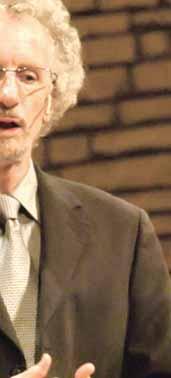



An interview with writer Phillip Yancey



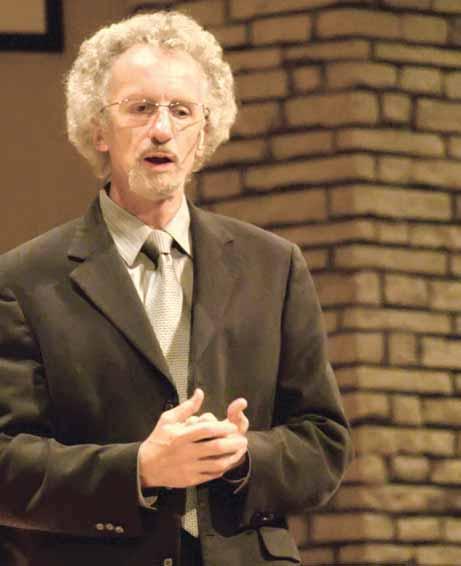
SHOW THE WORLD what God is like


Known for books that tackle thorny issues such as pain, prayer and spiritual disappointment, bestselling author Phillip Yancey has established himself as a credible ally of the Christian pilgrim. As a veteran journalist, he is an insightful observer of American evangelicalism. Prior to a recent speaking engagement at Tabor College, Yancey shared some of his insights and observations with former Christian Leader editor Don Ratzlaff.
CL: You have said, “My books are a process of exploration and investigation of things I wonder about and worry about.” So, what’s on your mind these days as you look at the landscape?
PY: I don’t have a title yet for the book I’m working on, but the subtitle is, “Communicating faith to a culture running away from it.” It’s the whole issue of the post-Christian society and
the really bad reputation Christians have within that society. Is it deserved? Should we be worried about it? What can we do about it?
CL: Why is it that the gospel doesn’t sound like good news?
PY: There are parts of the world where the gospel is actively

transforming society. We know that. But we don’t talk about post-Muslim societies; we talk about post-Christian societies. I’m asking, if the gospel is true, why doesn’t it work over the long term?
CL: Have you found some answers to your questions?
PY: I think the reason the gospel works for a time but not forever is what I call God’s greatest gamble. As I understand the Bible, in the Old Testament you see God reluctant to intervene, occasionally intervening and always there were body bags and scorch marks.
Then God descended and became a human being, became powerless and was crucified—and there’s all the theology behind that. But that wasn’t the end of the story. The story really begins with Ascension and Pentecost, where God says, “OK, it’s yours now. Here it is, go out and do it.” And God really turned it over.
We can’t imagine what anything is like for God, but you have to wonder what that must be like, knowing and seeing the mess we’ve made. It’s like Jesus looking out over Jerusalem and saying, “If only I could gather you under my wings.” But God tied his hands in a sense and said, “This is my goal: I don’t need to prove anything, but I want my followers to show the world what I’m like.”
We do that pretty poorly, but that was his goal and the risk he took.
CL: So what should Christians be pursuing if they seek to truly represent God before a world that seems to be walking away from him?
PY: Miroslav Volf, a Croatian theologian who grew up in the Balkans during the war and now teaches at Yale Divinity School, has said in a pluralistic society the best way to reach people used to be directly through the head. So Billy Graham would say, “You must repent. If you repent, come forward and your life will be changed.”
That worked for a while. It doesn’t really work now. Volf said to start with the hands; that affects the heart and then the head. So what we ought to be doing is exactly what MCC does—demonstrate what God cares about by the people we care about and by the causes and values we believe in. The people who receive those acts of mercy will be touched. Then, finally, you can say, “Here’s why I do that.”
CL: Most evangelicals would agree the United States is in a moral decline; some would say the U.S. already is a post-Christian society. What’s your view?
PY: Part of me says let’s be realistic, we’re headed the way of Europe. We have a prosperous, self-indulgent society and a rotten celebrity-oriented culture. But another part of me says nobody was predicting the Jesus movement, nobody was predicting the Calvary Chapel movement. Again and again, Jesus said the Spirit blows like the wind; you never know where it will show up.
I’d have to say the culture of the United States is a culture that’s offensive to God. Sometimes I say the only reason God puts up with it is because we bankroll a lot of good stuff for him around the world—a lot of bad stuff, too, but first of all a lot of good stuff.
If we really underwent another deep Depression, which is a possibility, it could be the best thing for the church.
CL: We’ve just come through a bitter presidential election with some interesting dynamics among evangelicals. What do we need to understand about our participation in the kingdom of the world and the kingdom of heaven?
PY: The old Augustine division of “City of God” and “City of Man” is biblical. To me the big divide is not a good society or a bad society. The big divide is how do we get the society we want? Do we get it from the top down, or do we get it from the bottom up?
Frankly, I am very nervous as Christians get higher and higher in politics because they tend to rely on that to accomplish the kingdom of God—and that never works. It usually produces the opposite.
We need to make sure our politics don’t determine which values are most important to us. If you ask the average person what are the political issues that are most important to evangelicals today, secular people would say, “The ones I hear about all the time are abortion and homosexuality.”
Here are two issues that are important, that were clearly sins in far more egregious forms in the day of Jesus and Paul, and yet Jesus didn’t say a word about them and Paul maybe two verses about homosexuality. So we’re defining ourselves by those things?
Jesus talked a lot about the poor, the danger of money and those things. So we’re missing the boat. We’re not following Jesus if our values are that skewed.
CL: Do you have a final word to Mennonites, as you’ve observed them?
PY: I would like to be encouraging of Mennonites on some levels and challenging on others. The encouragement is there are a lot of people who grow up Mennonite and then step out into the wider, wilder world and find out, “Hmm, I don’t have to be like that.” So I would say, claim your identity proudly. Being defined as an outsider is not all bad. The great temptation is to let the culture determine your values.
It’s pretty clear everybody knows some things are wrong. We know murder is wrong; we know adultery is wrong. But we don’t know pride is wrong. We need to be convicted of that. We don’t know that not caring about the poor is wrong. That’s the challenge. We need to go back to Jesus for those things—the things he emphasizes, which are so different than what the world around us emphasizes and also what the church emphasizes.
Stay radical, Mennonites. But be radical about the things Jesus was radical about.

Suggestions for your church children’s library
Does your church have a library for children? Is it an active and vibrant part of the ministry of your church? Here are some thoughts congregations may find helpful if they have, or are planning to establish, a library for children.
Why have a church library for children?
Borrowing and sharing is good stewardship. A children’s church library provides quality books for families on tight budgets. Grandparents or members of the congregation need not purchase books desired for the occasional visits of young children. The library supplements home libraries with a rotating collection.
But today’s children have access to public libraries, school libraries and e-books. Why provide a church library? The church library should promote the most treasured and highest quality books that a congregation wants its children to read. Children are constantly bombarded by options. A children’s church library can say to children, “These are the books we want you to have easily available, because we cherish them as a congregation.”
A church library for children can also provide a resource for adults who work in the children’s programs of the church. The church depends on volunteers. Church workers need easily available, quality books that can be used as teaching resources.
guage. Be wary of books that distort the biblical text by embellishments or omissions.
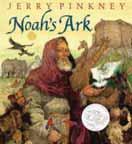
Illustrations should represent outstanding art and avoid misrepresentations of biblical characters as all light-skinned, in clean, brightly colored robes. Some outstanding illustrators in the religious market include Paul Maier and Tim Ladwig, but librarians shouldn’t look only in Christian bookstores. The secular market also publishes illustrated Bible stories including books by award-winning artists such as Tomie dePaola, Brian Wildsmith, and Peter Spier. Jerry Pinkney’s Noah’s Ark was recognized in the secular market as a Caldecott honor book in 2003. Poetry: Poetry books can provide magical readaloud moments at home or church. Librarians should look for illustrated editions of biblical poetry such as the love passage from Corinthians, the Beatitudes, the seasons’ passage from Ecclesiastes, the Lord’s Prayer and passages from Psalms. Church libraries should also include illustrated poetry of hymns such as Amazing Grace, Morning Has Broken and Silent Night.

What kinds of books should the children’s church library contain?
Illustrated Bible story books: Every church library should have a collection of beautifully illustrated Bible storybooks. Librarians should look for books based on stories from widely accepted translations of the Bible or retold in slightly simplified lan-
Poetic prayers and blessings can be part of the poetry section as well as collections that celebrate nature or explore emotions. Mattie Stepanek lived only 14 years but wrote poetry from his heart as a child of God, peace activist and a prominent voice for the Muscular Dystrophy Association.
Nonfiction books: Nonfiction books can support Bible teaching. The children’s church library should have reference materials such as an illustrated Bible atlas and Bible dictionary. It should have books about ancient Egypt, Rome and Greece. Books about Bible lands and archeology can put Bible stories in the con-
by KAREN NEUFELD
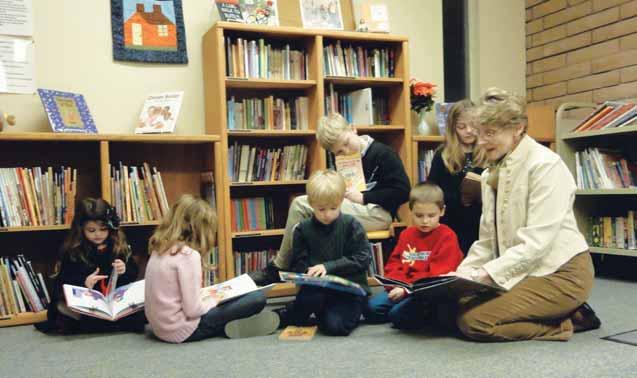
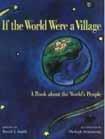

Librarian Karen Neufeld, pictured in the College Community Church library with children from the congregation, believes that congregations pass on their values through the library books they select.
text of their time and provide photos or illustrations of actual biblical sites. Nonfiction can also help young readers understand children in different parts of the world. Ann Morris, Jan Reynolds and Maya Ajmera are authors of nonfiction books with lots of photos and child-friendly text about the world’s children. Books like If the World Were a Village by David J. Small can help develop empathy for a world of injustice. UNICEF and National Geographic publish quality books for young readers about children and places of the world.
Nonfiction books about amazing animals, plant life, the earth and universe can be part of children’s early faith journey. Books by authors and illustrators such as Ruth Heller and Steve Jenkins are popular with young readers.
Biography is an important nonfiction category of books. True stories of people such as Joni Eareckson, Martin Luther King, Mother Teresa and Marian Anderson provide role models for young readers. Stories about the lives of children might include The Story of Ruby Bridges, Sadako and the Thousand Cranes, The Diary of Anne Frank, or Minty: A Story of Young Harriet Tubman
Each faith tradition should include biographies and stories important to the denomination and the history of the church. Within the Mennonite faith tradition this would include biographies of Menno Simons such as The Fugitive by Menno Augsburger and histories of Mennonite settlers such as The King of Prussia and a Peanut Butter Sandwich by Alice Fleming or On the Zwieback Trail by Lisa Weaver.
Fiction: Perhaps the greatest challenge for the church librarian is the building of a unique fiction collection for the church library. Librarians should look for options from their own denominational publishers but not neglect options available from other religious and secular publishers. Theme and purpose are important considerations when selecting fiction books for the church library. Possible themes include compassion (Oma’s Quilt and Elizabiti’s Doll), resolving conflict (Shiloh and Just Grace) or selfless acts (Mama Panya’s Pancakes and One Thousand Tracings). Eve Bunting writes children’s fiction with themes such as adoption, homelessness, aging and illiteracy.
Fiction should provide windows of understanding into the lives of
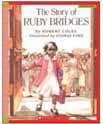
BOB FRIESEN
others and mirrors of reflection into a child’s own experience. For example, an only child should be able to find books that help her value and understand herself, as well as books about large families that help her value and understand the lives of others.
Books should provide windows into lives of children of different ethnicities, cultures and class. Four Feet and Two Sandals by Karen Lynn Williams and A Storyteller’s Beads by Jane Kurtz offer windows into the lives of refugee children. Patricia Polacco writes realistic stories with multicultural American family and neighborhood settings.
The fiction section should include fables and allegories for thinking about generosity and selfishness, wisdom and folly, kindness and cruelty as well as other themes that are sometimes easier to talk about with a fantasy tale rather than a realistic story. A collection of Aesop’s fables as well as tales by modern authors such as Arnold Lobel, Dr. Seuss, Max Lucado or Leo Lionni can illustrate principles of moral living. For older readers the library might include the C.S. Lewis Narnia series or John Bunyan’s Pilgrim’s Progress or the Kingdom Tales by John and Karen Mains.
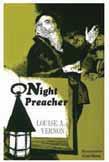
A book cart at coffee breaks or fellowship meals can make books more visible to the congregation and make checking out books more convenient. The book cart can highlight seasonal books or books that fit with a sermon theme.
Reading campaigns can encourage library use. Churches should choose campaigns that build cooperation and teach the value of doing something for others rather than competitions that offer prizes only to winners.
At my church the library budget was used one year to reward children’s reading points with school books for children in Kinshasa. Another year the children’s reading points earned instruments for the children’s music program of the church. Still another year, children read “Around the World,” filling a map with stars showing the settings for the books they read.
How can a church build a quality children’s library on limited funds?
Historic fiction is an important category of books for the fiction section of a church library. The Bronze Bow by Elizabeth George Speare provides a look at Jesus’ times from the perspective of a teen in Galilee. Crispin by Avi provides a look at how a young man would understand his world in pre-reformation Europe. Night Preacher by Louise Vernon gives a fictionalized account of Menno Simons’ life from the perspective of a son. Henry’s Red Sea tells the story of a World War II Russian Mennonite refugee.
How does a church encourage the use of the children’s books in its library?
Church librarians should regularly feature book promotions in Sunday bulletin inserts or newsletters. Such promotions keep the library in the minds of the congregation and encourage trips to the library to check out books.
Sunday school programs can include a monthly story and library time. A library time acquaints children with book options and provides time to check out books.
A church might encourage members of the congregation to buy a book for the church library for Christmas. Librarians could also encourage the gift of a book to the church library when a new baby is born or to celebrate a child’s birthday. Librarians should provide a “wish list” to help guide gift choices.
A carefully selective librarian may find great books at used bookstores, thrift stores or flea markets. As children outgrow books from their home collections, they should be encouraged to donate them to the church. The librarian should make clear, however, that a donation of a book does not assure its presence on the shelves of a church library. Donated books that are duplicates or that do not fit the purpose of the church library can be donated to a thrift store or Mennonite Relief Sale.

An active and vibrant children’s church library is possible as an asset to the ministry of the church.
Karen Neufeld has recently retired from her position as professor of children’s literature and director of the Liberal Studies at Fresno Pacific University. She is the librarian and a member of the congregation at College Community Church Mennonite Brethren in Clovis, Calif. To receive a bibliography of books in the CCCMB library or to become part of an online network of church librarians contact the author at kneufeld@fresno.edu.
Size doesn’t matter
Small church makes big impact when it partners with community
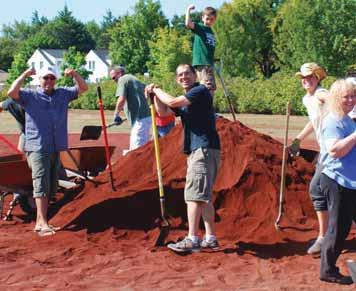
Just a couple of years ago, North Park Community Church (NPCC), Eugene, Ore., was invisible in the community. Although the church sits across the street from an elementary school, Aaron Box says that when his family moved to the area and he introduced himself as pastor of North Park, neighbors and school staff responded with, “Where’s that?”
And, really, what difference could a tiny band of 27 people make in a community that leans liberal, ranks among the most unchurched in the nation and has a distinct hostility toward organized religion?
Quite a bit of difference, actually. “Amazing things can happen—especially in a small church,” says Box. The key is not to do it alone.
When NPCC began in the early 50s, the desire of the congregation was to engage their community. But as often happens, over time the congregation lost its influence and found itself in survival mode. Then in 2008 an anonymous donation of gold coins, accompanied by a charge to feed the hungry, reminded NPCC of their original heart for their neighbors. They began to look for ways to reach out.
A natural place to start was the school across the street. Volunteers from the church began reaching out to the school in various ways, including encouraging the school staff of about 60 regularly through small gifts, thank-you cards, flowers and snacks. Terri Kargel, chair of North Park’s outreach min-
istry team and a former teacher herself, says staff members are always appreciative of the tokens, no matter how small.
“Our hope is that both staff and parents will become curious as to why we do what we do,” she says. “We’d love to tell them that it is because of Jesus’ love for us that we want to show love to them.”
Turns out the school is also a great place to feed the hungry, as that anonymous donor instructed. Bertha Holt Elementary School serves about 500 students, with an unusual dichotomy of both affluent and very poor students. Over half the students at Holt qualify for free or reduced lunch under the national program, with the vast majority qualifying for free lunch.
And food insecurity is a glaring need beyond the school: One in three children in Eugene doesn’t know where the next meal is coming from. Schools help through the lunch program, but too often children are left hungry on weekends and breaks.
Rather than trying to meet such a great need alone, North Park enlisted the help of their community.
“We have really shifted how we see outreach,” Box says. “Outreach isn’t just what we do for people; it’s something we do with people.”
The church now sees itself as a catalyst, leading the way and inviting the neighbors to join in.
One way the church has done that is through Harlow Serves, a North Park-initiated partnership between Holt school, the school’s parent group, the Harlow neighborhood association, several local businesses and three other area churches. Under the umbrella of Harlow Serves and through a network of local church leaders, North Park participates in Project Hope, a city-wide, cooperative effort to serve schools at the end of the summer with a Saturday work day on school campuses followed by a city-wide Sunday giveaway of school supplies, backpacks and more.
North Park, of course, focuses on serving Holt Elementary. For their first Project
North Park volunteers spruce up their local elementary school in summer work project.
Hope workday in August 2011, they invited community members, through Harlow Serves, to help. About 90 volunteers came together to clear a thistle infestation, spread fresh playground chips, pull weeds and tend to the fitness track.
In order to begin to make a dent in child hunger, North Park—again under Harlow Serves—initiated Feed Hope in 2011. Feed Hope works to serve those children who may go hungry during school breaks by inviting food donations, packaging those donations together with community volunteers, then distributing the food to families identified by the school.
The 2011 winter and spring break efforts included about 200 households and provided about 3,000 meals. For the winter 2012 event, held Dec. 19 at Holt Elementary, 80 volunteers helped package 1,500 meals in about 13 minutes.
Box says that, while they rejoice that children are fed, a second—but not secondary—outcome of these efforts is new and stronger relationships with those in the community. “Our goal isn’t just to feed a certain number of kids,” Box says. “Our goal is to engage people with the gospel, and that happens in relationships.”
Increased Sunday attendance, which has nearly doubled to somewhere between 50 and 60, is evidence of these growing relationships. Box easily counts eight or 10 families from the immediate neighborhood in that number, most of whom have come as a result of relationships begun during service.
And North Park is no longer invisible. “We’ve gone from a church that was somewhat hidden to a church that is not only known, but known for loving our community,” Box says. “That’s a really significant shift.”
This month, North Park will increase their impact on child hunger and continue to build relationships through a partnership with Generosity Feeds, a nonprofit that equips churches to tackle hunger and reach out through one-day food packaging events (http://generosityfeeds.org).
North Park is inviting their neighbors to gather Feb. 23 at Holt Elementary to help assemble meals that will be given to children to ensure they eat over the weekend. Generosity Feeds supplies the raw materials and packaging supplies for a nutritious soup mix, provides training and coaching and helps with online registration and donations. North Park hopes to assemble at least 10,000 meals in about two hours.
Again, full bellies are only part of the goal. Generosity Feeds not only helps plan the event but also trains select church leaders to build relationships with those who come to serve. Ron Klabunde of Generosity Feeds says, “We recognize that by training missionally-minded people in how to ignite relationships, they’re igniting new relationships with people who already have a desire toward the heart of God.”
So, if you ask North Park, size doesn’t matter. “Outreach can be us as a church taking the lead, inviting others and their resources to come alongside and championing the lost and the broken and the least,” Box says. “A tiny church can suddenly multiply their impact.” —Myra Holmes
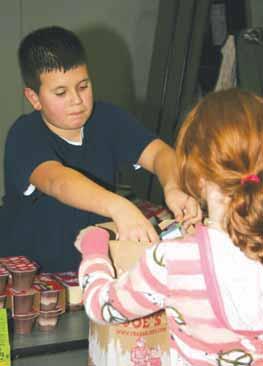
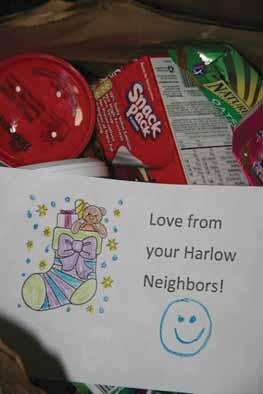
Through Harlow Serves, North Park makes a dent in child hunger.
North Park volunteers package meals for neighborhood families.
A “get-’er-done” guy witnesses in deed
MDS volunteer Bill Mast incorporates serving into life
In 1947, nine-year-old Bill Mast bumped along the road in the back of a truck with other men and boys from his family’s Amish community in Western Oklahoma. They were headed for the town of Woodward, Okla., where Mast would get his first taste of disaster relief work.
Woodward had been hit with a massive tornado and Mast, along with his father and brother, joined in the cleanup effort.
“As a nine-year-old I was able to do some work, though probably not as much as I thought I did,” Mast says with a chuckle.
Two years later his own family was on the receiving end of disaster aid as the community pulled together to rebuild their own barn destroyed by a tornado.
After more than 20 years of active involvement with Mennonite Disaster Service (MDS), Mast, a member of Memorial Road MB Church, Edmond, Okla., calls the 1947 tornado cleanup his first MDS experience before MDS was even in existence.
“Being the recipients of that spirit of cooperation and volunteerism shaped my thinking a lot,” he says.
A love for service has taken this Amish boy far beyond his insular Western Oklahoma community, extending a hand to disaster victims and people with housing needs in nine U.S. states, from California to Alabama. Mast has left the conservative dress and austere lifestyle of the Amish behind and has been part of Mennonite and MB congregations during his adult life. But he has retained the lifestyle of service nurtured by his Amish upbringing.
Mast and his wife, Betty, met during a voluntary service assignment in Colorado. They married and eventually settled in Oklahoma City where Mast learned cabinetry and worked in the building trades. After a number of years in construction in Oklahoma City they returned to voluntary service for three years at a housing repair program in Brownsville, Texas.
“When we came back from Brownsville, I said I want to continue to do something and not just totally leave the volunteer sector. MDS seemed to be a natural because of my skill and background,” he says.
“I’m a strong believer that we give witness in word and deed,” says Mast. “I’m better at deed than
word. But the thing is, when you do it, you’re going to get asked, and that gives you the opportunity to tell your story.”
Fellow church member and MDS volunteer Jay Blough confirms that Mast excels in witnessing through his deeds.
“He is a get-‘er-done kind of guy,” says Blough, “and at 75 years old can outwork any 50-year-old and probably some 30- and 40-year-olds.”
Mast says that his MDS experience has taught him also to value those who can’t do the demanding work he can. One summer youth team he supervised included a girl with some health problems. Though she was very limited in the kinds of physical work she could do, she had a unique gift for reaching out to people.
“She made the most significant contribution of anyone in the group,” says Mast, recalling her praying with a client who had cancer and taking time to talk and pray with neighborhood children. “She and others like her can make up for some of us who aren’t so good at sharing our faith.”
Much of Mast’s MDS work has been with young people. He delights in seeing work accomplished by youth and other inexperienced volunteers. “If you give me someone who is willing to work, I can give them instructions and we can get something done,” says Mast.
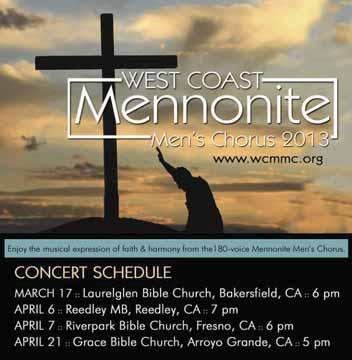
On the other hand, Mast is also energized by leading the Amish teams who work like well-oiled machines. He served as foreman for a group of young men who traveled to Newton, Texas, to rebuild after Hurricanes Katrina and Rita. In just six weeks the 22 men built two complete houses and re-roofed 14 others.
“I just enjoy working with Amish people. They are one of the most dependable labor sources,” he says, noting that the Amish community has a ready pool of young adults who are home and available for service during a time in life when nonAmish are off to college.
Retirement has freed up additional time for Mast’s MDS work, but even during the years he worked as a building contractor, he found ways to volunteer. As MDS’s Oklahoma Unit chairperson in 1999, Mast was called on to investigate after several severe tornados struck the Oklahoma City area. When the call came, he was in the middle of a room addition project for a client. Assessing the project, he was satisfied that it was under roof, and it wouldn’t disrupt the homeowner’s life to put the project on hold.
“I told the lady I have to go and I don’t know when I’ll be back,” says Mast.
The investigation involved selecting the area where MDS would work and setting up facilities to house and feed volunteers. A month passed before Mast could return to his business. He recruited his brother to help him catch up, but while he and his brother worked on the business backlog, Mast continued to commute the 30 miles back to the MDS site two or three days a week to keep the project on track.
Over the years, Mast has continued incorporating service into his life. Whether it was taking off a day here and there to help on an MDS site or suspending his business for weeks at a time, he has somehow found a way to make room to volunteer and doesn’t regret missed opportunities for greater financial success.
“People ask me, ‘How do you make it?’” Mast says, “and I really don’t know. It’s God’s blessing. I always tried to keep a little money on hand to operate with. Somehow, my bank account would stay about the same.”
Others from his church have caught the vision for service, and he has seen a spirit of volunteerism flourish there. The dozen or so men who do projects for fellow church members have lost count of how many roofs they have replaced. Even Mast
himself was a recipient: “One man saw the materials I had gotten to reroof my house and the next night he brought a bunch of guys to help me.”
Mast is confident that his investment in service has more than paid off.
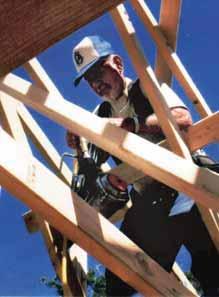
“People think that when you volunteer you really sacrifice, but that’s not exactly how it is,” he says, noting the blessings that have come to him. “Where else can you take a vacation and travel that cheap and see new places? I’ve gotten to meet and make friends with people from all over the U.S. and Canada. I feel blessed beyond whatever I have given.”— Kathy Heinrichs Wiest




Bill Mast, pictured installing roof trusses, has been actively involved with MDS for 20 years.
BILL MAST
Multiplying leaders
More than 100 interns have served at Mountain View
Pastors Fred Leonard and Dave Thiessen of Mountain View Community Church (MVCC) in Fresno, Calif., say they just don’t get it. Book after book they read declares that the church is going down the drain. “We just don’t know what kind of church those writers are in,” says Executive Pastor Thiessen.
It’s surely not MVCC, a congregation of 1,000 where baptisms are happening every six weeks and the young people are excited about ministering in their local church, eager to serve and exercise their gifts in the congregation.
MVCC believes in the future of the church and is actively working to make that future happen. Training people for ministry has always been a core value for the church. From the start, Leonard and Thiessen included a ministry intern on their staff. In its 19-year history over 100 people have served as interns with the church.
Internships at MVCC take various forms, but all share basic elements: active participation in a ministry of the church, supervision and personal mentoring by a church staff member and involvement in one of the church’s study/discipleship groups.
Funding an internship program that provides stipends starting at $500 a month is beyond the budget of even a church the size of MVCC. Lead Pastor Leonard makes it a priority to find funding sources outside the budget to finance the internships.
A growing number of interns are young people from within the congregation. “That is always our dream of how it should be,” says Thiessen, “our own young people being called out to ministry. We need to not just replace the current generation of leaders, but to multiply leaders.” Of their current 12 interns, eight came out of MVCC’s own congregation.
Youth intern Jessica Rice became part of MVCC as a high school freshman. She didn’t come from a Christian family, but when a high school classmate invited her to church “everything clicked.” Now a young adult, she feels a call to youth ministry. She is enrolled in an online ministerial studies program while interning 15 to 20 hours a week. Her internship includes discipling high school girls and teaching in a Good News Club children’s outreach.
Because of the church’s proximity to Fresno Pacific Biblical Seminary, MVCC has also interned seminary students looking for hands-on experience in ministry.
Current Mountain View intern Kyle Buller is studying to be a family therapist through the seminary’s marriage and family counseling program. He leads a support group in the church’s Recovery Discipleship ministry, which serves people dealing with addictions, controlling behaviors or unresolved past hurts. He credits the internship with stretching him in exercising his gifts. “Pretty soon you see yourself doing things you thought you could never do before,” he says.
Last year Mountain View tried a new approach, setting up a program similar to the missions training offered by MB Mission’s TREK program. Called the Elijah Project, the internship is a nine- or ten-month discipleship experience for people interested in serving in the local church, rather than internationally. The focus is on discernment of participants’ gifts and calling. While MVCC’s regular interns are paid a small stipend by the church, each Elijah Project participant raised the $7-$8,000 for their full support.
Julie Wiens, one of four participants in last year’s Elijah Project, stayed at MVCC as a full-time staff member when her internship ended. A graphic design major from Tabor College, Wiens wanted to explore how her training could be used in the church. “It was a dream of mine to combine graphic design with ministry,” she says.
Her main assignment involved redesigning the church logo and creating a new website. “Graphic design is important in communicating today. Visual stuff is what draws people,” she says. In her staff position now she is exploring more digital communications and thinking creatively how
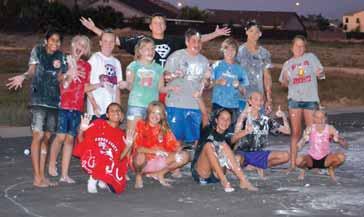
Wade French, surrounded by junior high students following a food fight game night, is one of more than 100 people who have served as interns with Mountain View Community Church.
MVCC
the church can use the growing medium of mobile communication devices.
Wiens says that her internship, which also involved youth ministry, missions and prayer ministry, changed her perspective on what it means to be called to ministry.
“You always hear those call stories,” she says, “and I felt like God was leading but he wasn’t necessarily giving me a specific call. Rather he was interested in building my character. I didn’t know exactly what I was going to do, but I realized I didn’t need to.”
Interns have come to MVCC from other nations as well. In recent years, 10 graduates from German seminaries have come for church planting internships; two more are scheduled for 2013.
Most German interns come from small churches of under 100 people, says Thiessen, and are inspired by Mountain View’s growing congregation. “They come with a lot of doubt that people will come, but when they see people make decisions for Christ they start to realize that it can happen. We underestimate the power of actually seeing God at work to empower a vision for the future.”
Clemens Mudrich is one such intern. After a six-month church planting internship he returned to the church in his small town near Dresden, Germany, and started a Friday night service that is drawing 40 to 50 young people weekly. In a challenging and economically depressed area of former East Germany, he is using what he learned at MVCC and seeing people respond to the gospel.
Not all interns are success stories, Thiessen points out. “We’ve had interns who have gone out to plant a church and quit.” Mountain View’s response to the challenge of raising up people who will follow through in ministry is to emphasize character building and a strong biblical foundation.
“For so many the well is shallow,” says Thiessen. “They need theological depth and to connect with God at that deep level that can weather life and difficult ministry.”
In a document headed “Staff Bottomlines” the church outlines requirements designed to
deepen interns’ spiritual maturity. Interns are expected to participate in prayer training and engage weekly in one of several church prayer meetings, practice fasting and daily personal prayer and Bible study, identify and actively pray for unsaved friends and lead a Bible study group. Each one also meets weekly with a staff member. “Those one-on-one times are what interns will identify as being the most meaningful thing from their internship,” Thiessen says.
Both Thiessen and Leonard received early training themselves through internships in their home church of Willingdon in Vancouver, BC. Mentoring the next generation of pastors, church planters and other ministry leaders is a challenge they take on with enthusiasm.
“Let’s get kids serving and having a great time in the local church,” says Thiessen. “Kids will say, ‘Church is great,’ and we will get to see Jesus change people’s lives. The desire to have that kind of experience inspires us to keep taking more (interns).”—Kathy Heinrichs Wiest
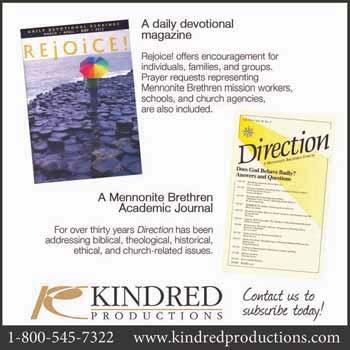





Don Morris Mission USA director
Standing before God’s throne
Join me in imagining the amazingly incredible scene of the multitudes in heaven standing before the throne of God. Can you picture yourself standing there immersed in the awe-inspiring wonder, joy, peace and yet incredible power that will envelop everyone in that diverse crowd? I love to think about this scene—one that I know I will one day experience firsthand. It is one of my favorite daydreams.
Often when I imagine standing before the throne, I also picture someone I’ve never met before coming to stand alongside me. This person says, “You don’t know me, but I want you to know that I am here because of the ministry of ___.” Fill in here the name of a Mennonite Brethren church plant. I know at that moment I will be struck with the knowledge that the culmination of why we strove to plant churches, why we spent the money to do so and why we fought the fight against the enemy of people’s souls—why that mattered—was because people matter a whole lot to God. One day I will stand before the throne of God alongside people who came to know him through the ministry of our MB church plants. I have tears in my eyes as I write this line.
I know that what I imagine is likely only a scarce replacement resemblance of what it will actually be
like. I think that heavenly scene will be much more incredible than what I can conjure up in my limited human mind. Our human minds cannot quantify the immeasurable.
That’s what church planting is all about: placing ourselves within communities so that we can interact with broken people and introduce them to Jesus so that they can have a relationship with Jesus right now here on earth. So that one day they can stand before the throne of God and experience the truly immeasurable wonder of eternity.

There is nothing more important we can do as a conference of churches than reach more people with the good news of Jesus, whether that’s through planting new churches so we can expand our impact or through our existing churches’ strong evangelistic efforts.
“After this I looked and there before me was a great multitude that no one could count, from every nation, tribe, people and language, standing before the throne and in front of the Lamb. They were wearing white robes and were holding palm branches in their hands. And they cried out in a loud voice: ‘Salvation belongs to our God, who sits on the throne, and to the Lamb’” (Rev. 7:9-10).
For me, the ministry of Mission USA is all about doing as much as we can—to help more people become a part of that future “great multitude.”


Six new churches
USMB announced a little over a year ago a goal of partnering with the various Mennonite Brethren districts to plant six churches in 2012. Although a few of the churches will hold their first public worship service in 2013, they all experienced a good start with core team development and small group gatherings in 2012. Here is a list of the churches started in 2012:
Axiom Church, Peoria/Glendale (Phoenix), Ariz., Gavin Linderman, church planter; Christ Church Sellwood, Sellwood (Portland), Ore., Jared Pulliam, church planter; Grace Point @ McAllen, McAllen, Texas, Aaron Hernandez, church planter;
Mountain View Community Church Sunnyside, Fresno, Calif., MVCC interns and staff; Slavic church plant (unnamed) in Spokane, Wash., Aleks Borisov, church planter;
The Stone, Denver, Colo., Mark Groutas and Jonathan Branch, church planters. The Stone is an affiliated church and is not a USMB-member church. As an affiliated church, oversight is more loosely defined and fiscal support amounts are lower.
“This list reflects what God has orchestrated among us over the past year,” says Don Morris, director of Mission USA. “I believe God has even greater things in store for us as we continue to plant churches that are making a difference.”
Morris says, “Not only are we planting churches in light of the vision that God gave to us, but we plant churches
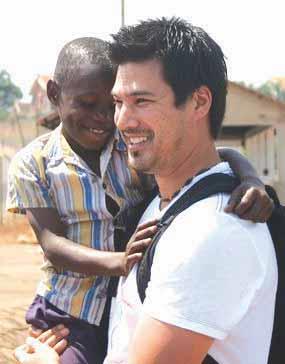
together, with local MB churches, districts and Mission USA all partnering to get the job done.”
USMB, through Mission USA, continues to pursue the vision of planting 60 churches within the 10-year span of 2012 to 2022—with the goal of partnering to plant another six churches in 2013.—Mission USA
Mission MB plants daughter church
Mission (Texas) MB Church has announced the birth of a daughter church in the northern part of this city in the Rio Grande Valley. Williams Velez is the church planter of Iglesia Biblica De La Gracia Hermanos Menonitas. Velez, who just completed a biblical studies degree from Rio Grande Bible Institute, Edinburg, Texas, formally began serving as the church planter Jan. 1.
Although Velez began serving as a paid staff member in January, he has ministered to a group of 15 to 20 people in the area for over a year. During that time, five people have been baptized. In addition to several adults, there are many children attending the weekly gatherings. Mission USA, Grace Bible Church of Gettysburg, SD, and the Latin American MB District Conference
(LAMB) are joining Mission MB Church as supporting entities. The church plant project team consists of Velez and his wife, Elurden; John Langer from Grace Bible Church; Don Morris, director of Mission USA; two or three leaders from Mission MB Church and perhaps a member from LAMB’s leadership board.
A small worship facility is under construction on what is known as 7-Mile Line in Mission. Plans are for this facility to provide space for the new church’s worship gatherings, but additional space is still needed for children’s activities. The church’s goal is to reach people in close proximity to the church facility, a neighborhood with many needs and broken families.—Mission USA
Mark Groutas and his co-worker Jonathan Branch are church planters working in Denver to plant The Stone, a new church affiliated with USMB and one of six new congregations planted in 2012.
Katie Funk Wiebe

Love, marriage and baby carriages
This fall my extended family celebrated two weddings and three babies. Such events are heartwarming. They tell me that the next generation is willing to try again where my generation may possibly have missed the mark. Each wedding, each baby, is a symbol of hope that something good is going to happen. These kindergartners at marriage and family begin with tons more information than I and my generation had when we started out. We had little more than a bed, a stove, a few dishes and some odds and ends of knowledge about what it took to make a marriage work. We thought love alone would be enough. Sometimes it was; sometimes it wasn’t.


As Norris writes, it is hard to tolerate, much less love, the person who shares kitchen, bath and bed. And maybe hogs more than half when, as in my case, your spouse is a good foot taller and the bed a good foot shorter than today.
I don’t think marriages are made in heaven. They’re chiseled out here on earth, day after day, meal by meal, baby by baby, laundry hamper by laundry hamper.
I agree with Kathleen Norris in Acedia and Me: A Marriage, Monks, and a Writer’s Life that commitment always costs. “There is a particular burden in loving another person…. This is the love demanded of any husband, wife, or parent.”
It is easy to fall in love, in fact to stay in love, when someone else does the cooking and cleaning after a night of dining and you only have to clean up after yourself.

There will be days when you are taken to the depths of despair and wonder why you ever agreed to this strange arrangement. But also moments when you wish you could do this forever and forever. As Norris writes, “As love takes us on a harrowing journey, even to hell and back, we may find the path arduous but remain convinced that it is the only one worth taking.”




A young person in the heady moments of passion doesn’t reckon on the fact that married life will become a series of repetitive activities with occasional high moments. What I remember most about my 15-year marriage are not the times of great physical intimacy but the tender moments together at the end of the day drinking a cup of tea and sharing what life had been.
Norris cites a study that embracing one’s spouse at the beginning and end of each day produces good and stable marriages. Even a little peck on the cheek was enough. That small action was the only one that made a consistent difference. I agree that is important. My husband always kissed me before he left for the day. We also found that praying together each evening helped. It is hard to pray when you are angry. Prayer then becomes a sham.
Two weddings, three babies. I rejoice with each couple. These are important new beginnings. Go for it.
Former Christian Leader columnist Katie Funk Wiebe, of Wichita, Kan., is the author of a dozen books and numerous articles and is still on a limited speaking circuit in her 80s. This essay is from her blog, Second Thoughts (http://kfwiebe.blogspot.com), which is about life as an octogenarian and is reprinted with permission. Wiebe is pictured with her great-grandson Andrew Harms. (Contributor photo by Joanna Wiebe.)

Matthew Ford
Film shatters stereotypes of suburban poverty
Sometimes life throws a “new normal” at you that significantly shakes things up and causes you to rethink or look differently at the world in which we live. Six years ago I experienced a new normal that invited me to look a little harder at my world. So my wife and I moved from a nice suburb into our city’s highest crime and highest poverty neighborhood. Now I find myself waking up every morning, not to the sound of birds chirping but to the jangle of shopping carts being pushed through the alley by those who are homeless or collecting cans and bottles as a means of survival.
A few weeks ago my church hosted a showing of The Line, a recent documentary by Sojourners that looks at the growing reality of suburban poverty. A new normal emerged for many as we wrestled together—some for the first time—with this reality.
One reason I appreciate this film is because it tells the stories of real people who find themselves in unexpected and unwanted situations. An ex-banker now relies on food stamps. An aging fisherman struggles because his shrimp-catching business was devastated by the Gulf oil spill. Most of us think those in poverty are lazy, stupid or addicted to something and that if they would only work harder they would get out of the situation they find themselves in.
The Line stories shatter those stereotypes. As I interact with the folks pushing their shopping carts down our alley, I have learned that their stories go much deeper than an addiction or laziness. It’s just not as easy as “if they would only work a little harder.”
Those of us jammed into our church classroom found ourselves engaged in a conversation that took us out of our normal way of thinking. We were stretched by questions: How can we prevent ourselves from stereotyping those struggling with poverty and better understand and support those who want to live meaningful and dignified lives in spite of their circumstances? What are some things on a local level that can be done to address some of the issues that contribute to poverty? What would you do if you found yourself in one of these situations?
The Line has fostered a conversation that has helped us continue down the road we are deeply committed to as a church: the road of neighborhood engagement. One adventure is launching a nonprofit community organization to further help meet the needs of the neighborhood. Another adventure is possibly purchasing a house in the neighborhood where interns will live, engage in the neighborhood through the church’s local ministries and develop as emerging leaders.
I am thankful for the gathering at my church where we wrestled with the realities of poverty in our country and in our neighborhoods. I trust that the hard stories presented in The Line will serve us well as we seek to follow Jesus into hard places and be the solution that brings life.
Matthew Ford is pastor of youth and family ministries at North Fresno MB Church in Fresno, Calif.

We Mennonite Brethren describe ourselves as Evangelical and Anabaptist. Looking for a resource that explains what it means to be Anabaptist? Check out this four-minute video produced by Third Way Media, a media resource for all things Anabaptist, posted at http://www.youtube.com/watch?v=1B5vj6QouDc. A 15-minute version is available on DVD at


churchNotes
BAPTISM/MEMBERSHIP
Austin Boone, Devin Charles, Silas Clayton and Katherine Havnen were baptized Nov. 18 at Laurelglen Bible Church, Bakersfield, Calif. Dylan Grimes and B.J. Schramm were received as members.
Bo Boltjes, Carol Boltjes, Bryan Harrell, Stacie Fallau, Scooter Reid and Kokeb Neazor were baptized Nov. 4 at Kingwood Bible Church, Salem, Ore.
Allie Ryan was recently baptized at Axiom Church, Phoenix, Ariz.
Ty Martin, David Phillips, Patti Sani and Peter and Lydia Santana were received Nov. 25 as members of Grace Community Church, Sanger, Calif.
Randi Kearn, Shaun Valenzuela, Audrey Mack, Damon Jenkins, Lori Crouch and Jermaine Jones were baptized and received as members of North Fresno (Calif.) MB Church Nov. 18. Robert and Roxanne Aguirre, David Olson and Lizz Tapscott were also received as members.
Carlos Ochoa was baptized Oct. 28 at Pine Acres Church, Weatherford, Okla.
Jarrod and Becky Irick and Jacie Redcay were received as members of Corn (Okla.) MB Church in November.
Jessica Rice, Lindsay Thomas, Teri Christiansen, Ross Willnow and Haylie Webster were baptized Nov. 11 at South Mountain Community Church, Draper, Utah. Chris Opie was baptized at the Daybreak campus Nov. 11, and Stephanie Burk was baptized Nov. 18.
CELEBRATIONS
College Community Church, Clovis, Calif., held a 50th anniversary celebration meal Jan. 6.
WORKERS
Tabor College senior Blake Beye served as an intern at Stony Brook Church, Millard, Neb., in January.
Kayla Drake is serving as a youth ministry intern at Garden Valley Church, Garden City, Kan.
Robert Aguirre and Hector Hernandez served as interns this fall at North Fresno (Calif.) MB Church.
Jeff Nikkel, pastor of Trailhead Church, Centennial, Colo., has announced his resignation, effective in March.
Gaylord Goertzen, pastor of Ebenfeld MB Church, Hillsboro, Kan., has announced his retirement, effective fall 2013.
Glen Garoutte has resigned as pastor at Post Oak MB Church, Indiahoma, Okla.
Jeremy Jordan has accepted the call as lead pastor at Memorial Road MB Church, Edmond, Okla. He has been serving as youth pastor at MRMBC. He and his wife, Amy, were installed Jan. 20 as the new pastoral couple.
DEATHS
Fleishauer, Harold, Bakersfield, Calif., member of Rosedale Bible Church, Bakersfield, April 28, 1928 – October 24, 2012. Parents: Henry and Eva Fleishauer. Spouses: Dolores Bese, deceased; Doris. Children: Chris, Steve; three grandchildren; one greatgrandchild.
Goentzel, Bertha, Hillsboro, Kan., member of Hillsboro MB Church, Nov. 18, 1917-Oct. 1, 2012. Parents: Jacob and Helena (Smith) Unruh. Spouse: Clarence Goentzel, deceased. Children: Sharon Bartel, James, Richard, Quinton, Howard, Douglas, Carmen Schmidt; 13 grandchildren; 15 great-grandchildren.
Gossen, Joel, Corn, Okla., member of Corn MB Church, July 9, 1939-Dec. 29, 2012. Parents: J.C. and Anna (Vogt) Gossen. Spouse: Wilma. Children: Bryan, Bart, Scot; five grandchildren.
Hamm, Betty A., Enid, Okla., member of Enid MB Church, April 17, 1937-Dec. 13, 2012. Parents: Edward and Anna (Fast) Becker. Spouse: Clayton Hamm. Children: Randy, Rodney, Roxanne Heath; six grandchildren; one great-grandchild.
Heinrichs, Alma, Reedley, Calif., member of Dinuba (Calif.) MB Church, May 1, 1924-Oct. 8, 2012. Parents: Franz and Mary (Heinrichs) Thesman. Spouse: Marvin Heinrichs. Children: Jerry, Barbara Hofer, Rollin, Lyndon; 11 grandchildren; 15 great-grandchildren.
Jost, Eldon L., Buhler, Kan., member of Buhler MB Church, March 6, 1925-Nov. 20, 2012. Parents: Frank R. and Marie (Loewen) Jost. Spouse: Luella. Children: Randy, Roger; five grandchildren.
Jost, Elmer Wilburn, Reedley, Calif., July 19, 1927-Oct. 26, 2012. Parents: Jacob S. and Anna (Willems) Jost. Spouse: Loree Isaak.

Copper Hills breaks ground
Copper Hills Community Church, Glendale, Ariz., broke ground Nov. 18 on their first facility. The church was planted in 1997—the first to be planted under the national Mission USA church planting initiative—and has most recently been meeting in a school. The Well Project takes its name from the account of Jesus’ encounter with a woman at a well, who “came for water and left with living water,” as Pastor Brad Klassen says. The hope is that the 13,000-square-foot facility will not only serve as a place to worship for Copper Hills but will also become a place for the community to gather and find their emotional, physical, social and spiritual needs met. The groundbreaking service included opportunities for attendees to commit to prayer for those they’d like to bring to The Well and to Jesus, to pledge continued financial support and to fill bottles with the turned earth, symbolic of God’s past work and a reminder to pray for the continuing work. The facility is funded through a partnership between the congregation, the Pacific District Conference’s loan fund and MB Foundation. Expected completion is early 2014.

Parents attend Sunday school
Parents at Koerner Heights MB Church, Newton, Kan., attended children’s Sunday school classes for three “Take Your Parents to Sunday School” days this winter. Fourth through sixth graders hosted their parents Nov. 18 for a lesson about obedience through a rappelling demonstration. On Dec. 2, first through third graders invited their parents to learn with them about prayer. Parents of junior and high school students participated in a typical lesson Dec. 16. Children’s ministry director Diana Zuercher says the events are one way the church partners with parents in their role as spiritual trainers.
Church joins in Christmas parade
Each Christmas, volunteers from Garden Valley Church, Garden City, Kan., create a float to participate in the city’s Christmas parade. For 2012, the 11th year for Garden Valley, the 52-foot float featured a park scene with a lighted nativity scene and a turning carousel. “Joy to the World” played while church volunteers passed out candy bags and booklets that presented the gospel and included information about the church. Garden Valley attendee Hannah Profitt says the annual float provides an opportunity for church members to be involved in the community, share the true story of Christmas and simply spread some joy.

Children: Rick, Jim, Tim, Mark; seven grandchildren; four great-grandchildren.
Loewen, Don, Bakersfield, Calif., member of Rosedale Bible Church, Bakersfield, July 12, 1933–Nov. 5, 2012. Parents: Mr. and Mrs. Frank Loewen, Spouse: Marian. Children: Sandra Worth, Steve; four grandchildren.
Pollman, Sam, Bridgewater, SD, member of Salem MB Church, Bridgewater, Jan. 6, 1936-April 6, 2011. Spouse: Shirley Hofer. Children: Jeffrey, Linda Glanzer, Cynthia Fisher, Kristi Wollman; 11 grandchildren; one great-grandchild.
Winter, David, Saluda, NC, member of Parkview MB Church, Hillsboro, Kan., Nov. 30, 1990-Dec. 3, 2012. Parents: Dale and Rachel (Hofer) Winter.
reaching in
DISCIPLESHIP
Good News Fellowship, Ferndale, Wash., will host a marriage conference, “The Art of Marriage,” Feb. 8-9.
A new small group option at Pine Acres Church, Weatherford, Okla., aims to develop “head, heart and hands” through fellowship meals, focused teaching and service opportunities. “Hot Topix” will run through May. Buhler (Kan.) MB Church will host a one-day couples’ retreat Feb. 9, featuring a video series by Pete Briscoe.
This winter, attendees of Zoar MB Church, Inman, Kan., donated toward the purchase of Bibles to be placed in hymnal racks and given to visitors. The goal was for each family to provide one Bible.
Volunteer “prayer partners” from Corn (Okla.) MB Church pray regularly for each student in seventh grade through collegeage, many of whom do not regularly attend the church.
FELLOWSHIP
A women’s event Jan. 13 at Zoar MB Church, Inman, Kan., featured cupcake decorating, a cupcake-themed devotional and an offering for Stony Brook Church, a USMB church plant in Omaha, Neb.
Youth at Bible Fellowship Church, Rapid City, SD, celebrated Christmas with “Hawaiian Christmas” gatherings in December for junior and senior high students.
Women from Community Bible Church, Olathe, Kan., wore something sparkly for a Christmas gathering Dec. 7.
Families from First MB Church, Wichita, Kan., were invited to wear their pajamas to “pizza, pj’s and presents” Dec. 5. They wrapped gifts to be given to those in need, ate dinner and snacks and watched a family movie.
The Amor y Fe congregation of Butler MB Church, Fresno, Calif., hosted a Kings Day Festival Jan. 6 for children in the church and community. The free event included chocolate, balloons, traditional “Rosca de Reyes” cake, mimes, clowns, music and a brief message and prayer of blessing. Each child also received a small gift.
Youth from Rosedale Bible Church, Bakersfield, Calif., and Heritage Bible Church, Bakersfield, played a game of “Mission Impossible” Dec. 15. The spy-and-agent game teaches strategy and team building.
Children who had been practicing an instrumental Christmas song were invited to participate in an extended prelude to the children’s Christmas program Dec. 16 at Hillsboro (Kan.) MB Church
Attendees of Ebenfeld MB Church, Hillsboro, Kan., gathered Dec. 9 for an evening of caroling in town and in nearby senior living complexes, followed by refreshments.
Women from Buhler (Kan.) MB Church traveled to various homes that were decorated for Christmas for a holiday tour of homes and progressive dinner Dec. 3. Proceeds from the event benefited the local food bank.
Attendees of Bethesda MB Church, Huron, SD, gathered Thanksgiving morning for an informal game of football.
Attendees of North Park Community Church, Eugene, Ore., enjoyed a holiday progressive dinner Dec. 16.
Men from Birch Bay Bible Community Church, Blaine, Wash., went out for a burger-and-fries dinner Dec. 17, then went to see “The Hobbit.”
Families from The Heart, Tulsa, Okla., enjoyed a free skating party Nov. 17.
WORSHIP
Jon Wiebe, president and CEO of MB Foundation, preached on the power of money Sept. 23 at North Oak Community Church, Hays, Kan. He also led a stewardship workshop Sept. 29.
Reedley (Calif.) MB Church has shifted the focus of their ministry to young adults, The Source, from a Sunday night service to smaller gatherings.
College Community Church, Clovis, Calif., held their annual Christmas mourning service Dec. 23 for those needing space to grieve.
Garvie Schmidt, representing MB Foundation, was the guest speaker for Harvest Mission Sunday Nov. 18 at Henderson (Neb.) MB Church
Jon Wiebe, president and CEO of MB Foundation, preached and taught an adult Sunday school class Nov. 18 at Cornerstone Community Church, Topeka, Kan.
Garvie Schmidt, representing MB Foundation, preached on “Roadblocks to Open-handed Living” Nov. 11 at Christ Community Church, Sioux Falls, SD.
LOCALLY
Good News Fellowship, Ferndale, Wash., collected coats to be donated to the homeless this winter.
This winter, volunteers from Community Bible Church, Olathe, Kan., were matched to elderly
or disabled homeowners in town and took responsibility for clearing snow when necessary.
Rosedale Bible Church and The Bridge Bible Church, both of Bakersfield, Calif., were among the area churches participating in the “Love for Thanksgiving” outreach that served 1,200 meals to families in Bakersfield. Rosedale served 350 pans of yams in a congregational effort titled, “The Grand Yam Slam.”
Mountain View Community Church, Fresno, Calif., has taken responsibility for staffing a local community center with volunteers who supervise the center and spend time with kids who need homework help.
Volunteers from First MB Church and Lighthouse Community Church, both in Wichita, Kan., distributed 275 turkey dinners Dec. 9 to residents in a lower-income part of town.
Hesston (Kan.) MB Church hosted a single parents’ day out Dec. 1.
Attendees of Salem MB Church, Bridgewater, SD, donated socks to be given at Christmas to
CLEARINGHOUSE
Local Church: Pastor of Care Ministries: The Shafter (Calif.) MB Church is seeking a part-time pastor of care ministries. For additional information please contact Pat Coyle, Senior Pastor (pcoyle@shaftermb.org).
Local Church: Senior Pastor: Grace Bible Church, Gettysburg, SD, is searching for a full-time pastor with leadership qualities, who can relate well with young married/single adults. Our evangelical church is very social and outgoing with approximately 110 members. Send resumes and inquiries to Ray VanBockel c/o Grace Bible Church, 310 South Broadway, Gettysburg, SD 57442.
Local Church: Associate Pastor for Youth: Kingwood Bible Church, a Mennonite Brethren congregation in Salem, Ore., is accepting applications for a full-time youth pastor. We have an active youth ministry, serving 30-plus middle school and high school students. The youth pastor will work with an oversight board and is expected to teach, direct activities and plan service missions. Other ministry opportunities as gifts and training allow. Salary commensurate with education and experience. Willing to consider an internship for the right college-enrolled applicant. To apply, send a cover letter and resume to KBC Search Committee, kingwoodapp@yahoo.com. To request a full job description or for other inquiries, contact Ryan Kargel, kingwoodapp@yahoo.com.
children served by the Hofer Trust Ministries, administered by the church and featured in the December/January CL.
Volunteers from Grace Community Church, Sanger, Calif., made and tied eight denim comforters this winter, which they donated to a local ministry to give to homeless people.
GLOBALLY
Twelve new wells were built in Niger, West Africa this winter, funded by Enid (Okla.) MB Church, Buhler (Kan.)MB Church and “Man Day,” an annual gathering of men near Enid.
The annual “Market of Hope” at Laurelglen Bible Church, Bakersfield, Calif., held Nov. 4, gives attendees the opportunity to impact the world by purchasing a variety gifts such as school supplies for Indian orphans, sheep for Kenyan widows, blankets for poor in Mexico or motorbikes for Thai evangelists.
Local Church: Pastor of Worship: Belleview Community Church, Littleton, Colo., is seeking a part-time pastor of worship to partner with the senior pastor to plan music, worship and implement Sunday morning services and special occasions and to train volunteers serving in this area and to take the point in leading a contemporary worship band. If interested send cover letter and resume to Mike Andrews at mandrews@belleviewchurch.org.
Local Church: Family Pastor: Belleview Community Church, Littleton, Colo., is searching for a part-time family pastor to provide leadership, oversight and an integrated approach to three areas: children (infants through 6th grade), youth (junior and senior high) and parenting. If interested, send cover letter and resume to Mike Andrews at mandrews@belleviewchurch.org.
Agency: Planned Giving Advisor: MB Foundation is accepting applications for planned giving advisor. This person, based out of the Fresno, Calif., office, will represent MBF programs and services to individuals and ministries throughout the West Coast. MBF is a service agency of the U.S. Conference of MB Churches. Salary commensurate with training and experience. If interested, send a letter and resume to: Jon C. Wiebe, President/CEO, MB Foundation, PO Box 220, Hillsboro KS 67063 (jwiebe@mbfoundation.com)

Job Openings












































